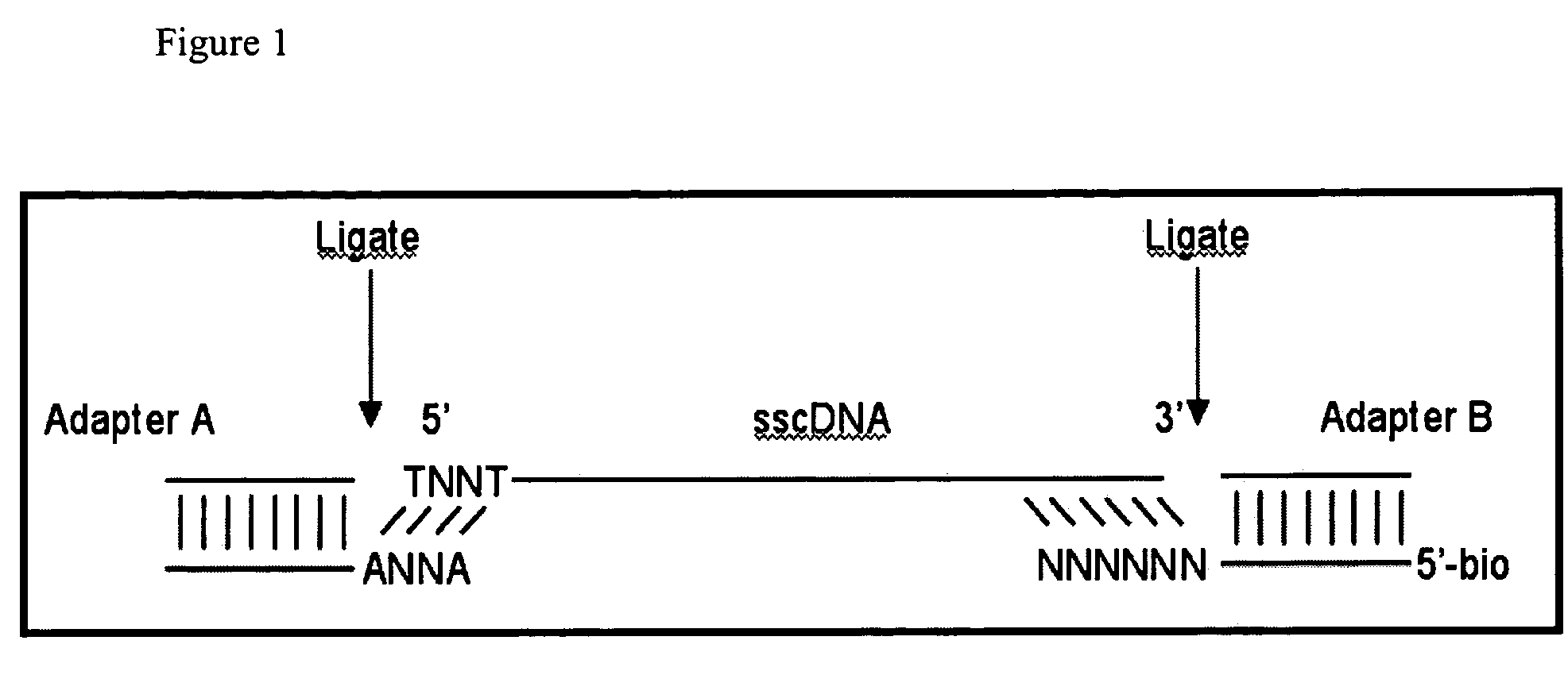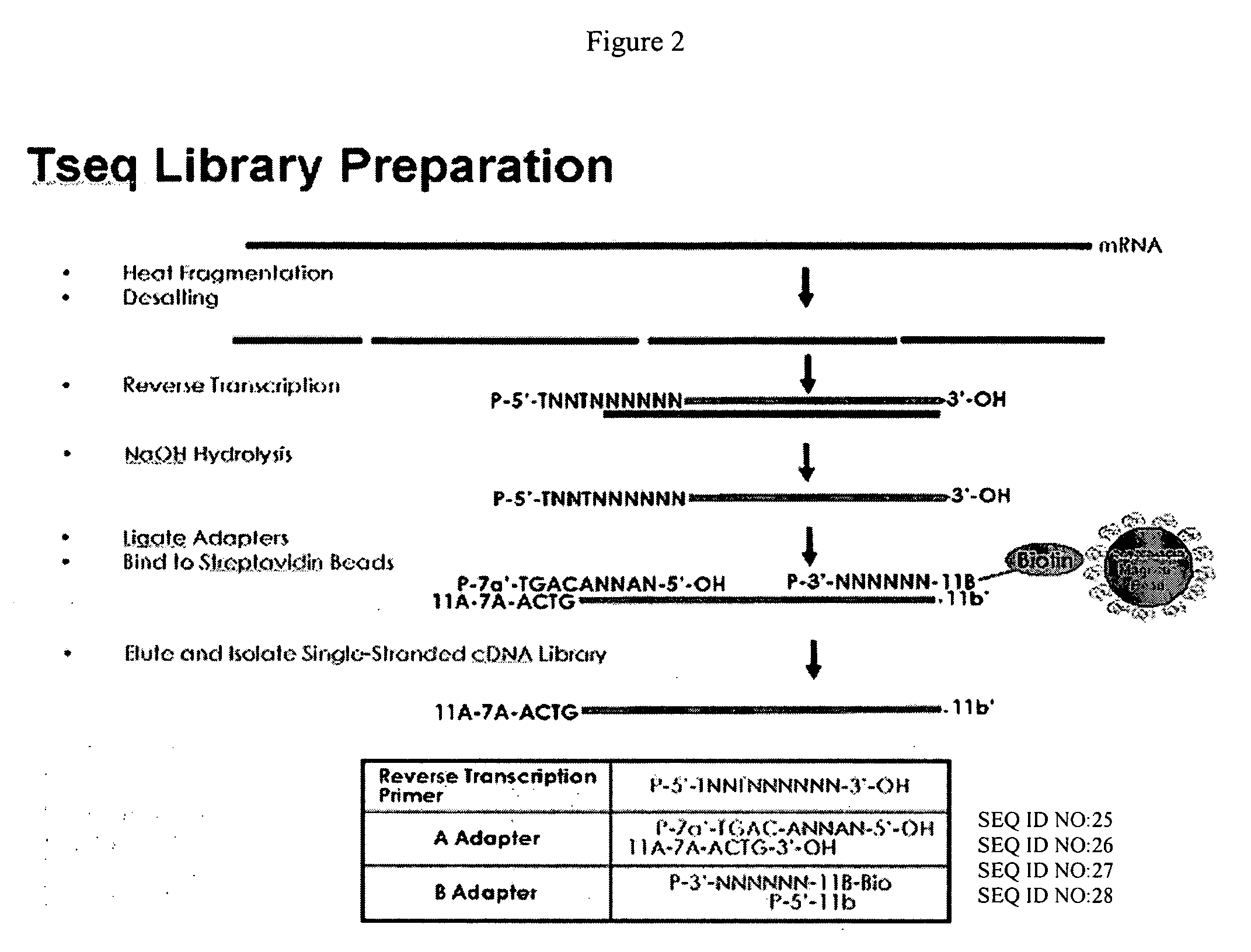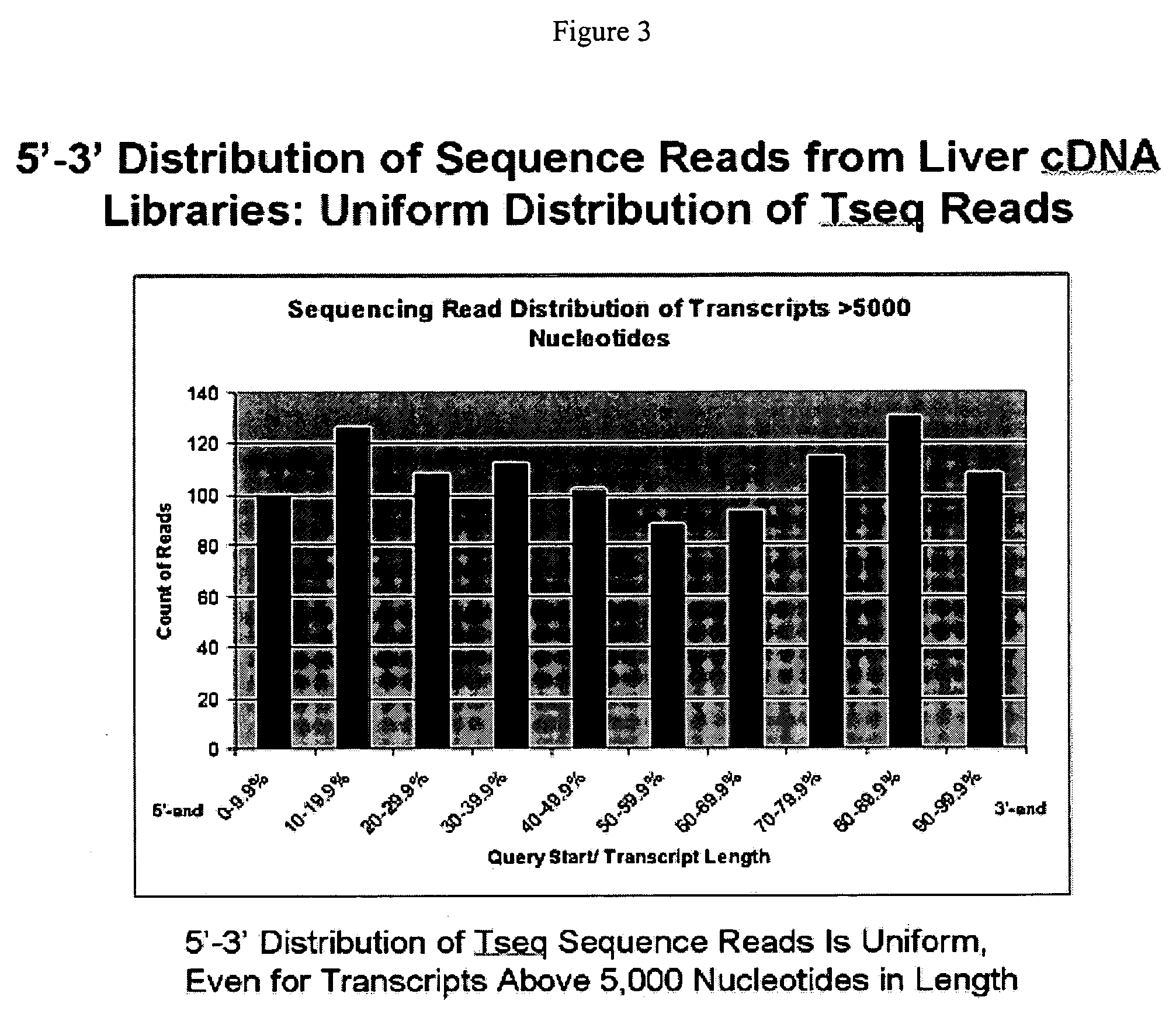cDNA library preparation
a dna library and cdna technology, applied in the field of molecular biology, can solve the problems of limited methods of transcript profiling by sequencing, laborious methods of sequencing, and impeded widespread adoption
- Summary
- Abstract
- Description
- Claims
- Application Information
AI Technical Summary
Benefits of technology
Problems solved by technology
Method used
Image
Examples
example 1
Material and Methods The protocol has been developed to work starting with 200 ng of mRNA material. A schematic of this protocol is shown in FIG. 2.
[0092] The starting volume for the process was 10 μl. The sample was placed on ice and 2.5 μl of 5× Fragmentation buffer (0.2 M Tris-acetate, 0.5 M potassium acetate and 157.5 mM magnesium acetate) was added to the sample and mixed well. The sample was placed in a thermocycler and heated to 82° C. and allowed to incubate at 82° C. for 2 minutes. Immediately following the incubation at 82° C., the sample was transferred back to ice.
[0093] Salt was removed from the sample in a desalting step. Methods of desalting samples are well known. The protocol used here involved passing the sample through an Autoseq G-50 column (Amersham Biosciences) according to the manufacture's instructions. The recovered material of approximately 20 μl volume was dried down to 10 μl by centrifuging under vacuum (2 Torr) at 45° C. in a speed-vac (Savant Speed Va...
example 2
cDNA Library Preparation and Sequencing of an Influenza Virus Genome
[0100] RNA genome material of influenza virus strain A / Puerto Rico / 8 / 34 was purchased from Charles River Laboratories (Wilmington, Mass.). The influenza genome is known to comprise 8 segments of single-stranded negative-sense RNA. The total length of all segments is 13500 nt. The starting RNA material was found to be present in distinct size fractions corresponding to the segments of the viral RNA (FIG. 7). Various starting amounts (10 ng, 20 ng, 50 ng, or 200 ng) of RNA were used in the preparation of cDNA libraries.
[0101] For RNA fragmentation, the starting amount of RNA, in a volume of 10 μl, was added to 2.5 μl of 5× Fragmentation Buffer (200 mM Tris-Acetate, 500 mM Potassium Acetate, 157.5 mM Magnesium Acetate, pH 8.1), vortexed briefly, and incubated at 82° C. for 2 minutes, then chilled on ice. For clean-up of the fragmented RNA, the sample volumes were adjusted to 50 μl with 10 mM Tris-HCl, pH 7.5. One hun...
PUM
| Property | Measurement | Unit |
|---|---|---|
| Digital information | aaaaa | aaaaa |
| Fraction | aaaaa | aaaaa |
| Fraction | aaaaa | aaaaa |
Abstract
Description
Claims
Application Information
 Login to View More
Login to View More - R&D
- Intellectual Property
- Life Sciences
- Materials
- Tech Scout
- Unparalleled Data Quality
- Higher Quality Content
- 60% Fewer Hallucinations
Browse by: Latest US Patents, China's latest patents, Technical Efficacy Thesaurus, Application Domain, Technology Topic, Popular Technical Reports.
© 2025 PatSnap. All rights reserved.Legal|Privacy policy|Modern Slavery Act Transparency Statement|Sitemap|About US| Contact US: help@patsnap.com



